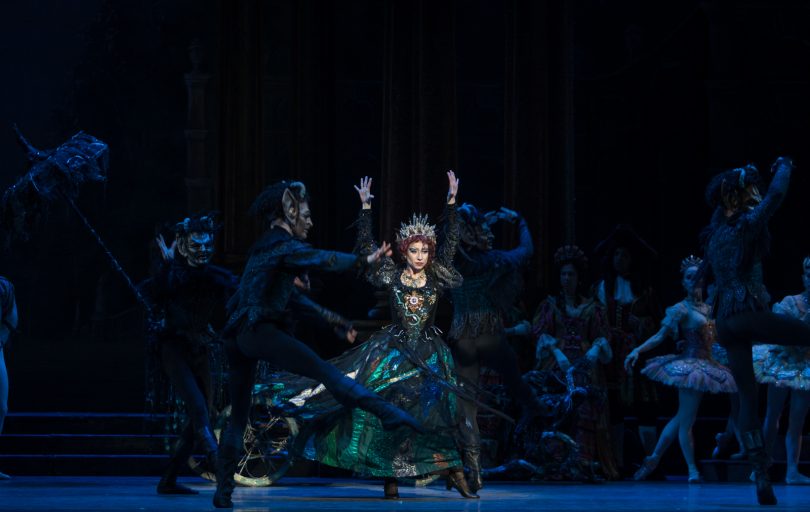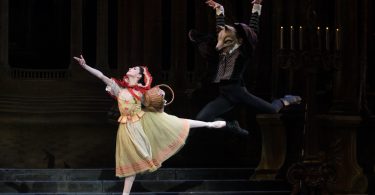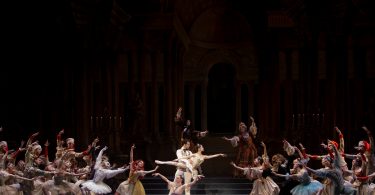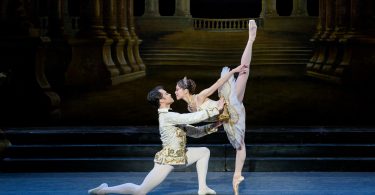by Eesha Pendharkar
BU News Service
Boston Ballet’s “The Sleeping Beauty” brings to life the beloved fairy tale in an enchanting performance, with choreography by Marius Petipa and additional input by Sir Frederick Ashton. The company’s version of “Sleeping Beauty” has been a constant favorite and manages to preserve its traditional charm while showcasing some of the most difficult and impressive ballet moves.
“This is my favorite production of The Sleeping Beauty, and I am excited to share it with Boston audiences again. It is a fantastic introduction for the first-time ballet goer, as well as a true pleasure for connoisseurs,” said Boston Ballet Artistic Director Mikko Nissinen in a press release. “The Sleeping Beauty is ingrained in ballet history, and I am proud that Boston Ballet continues this legacy.”
The performance is the embodiment of classical grandeur on stage and the story of Aurora and Prince Desire seems like it was meant to be told through ballet. Jonathan McPhee conducted the Boston Ballet Orchestra through the score by Peter Ilych Tchaikovsky, which truly brought the story to life with heavy notes that signaled foreboding and airy melodies for more playful moments. The costumes and sets by Emmy-award-winning designer David Walker offer an intricate canvas for the dancers to paint the beloved fairy tale on.
The ballet is divided into three acts with a total run time of almost three hours. Act I starts with the christening ceremony of Princess Aurora, played by Misa Kuranaga. The six good fairies blessing is showcased through their own unique solos, the most distinctive being the humorous flit of the Songbird fairy, played by Brett Fukuda.
The evil fairy Carabosse, played by Erica Cornejo, then appears with her creatures and curses the princess, angry at being slighted. Carabosse’s score was one of the most memorable musical moments from the ballet. The Lilac fairy, played by Dusty Button, modifies the death sentence to an enchanted sleep. Button’s portrayal made the audience rely on the Lilac fairy to save Aurora. Through her graceful, measured motions she reassured the King and Queen, confronted Carabosse and led Prince Desire to Aurora.
Kuranaga’s Rose Adagio, when she stands on pointe, her suitor’s hand her only anchor, was perfectly executed. Every time she made a trembling shift as one prince releases her hand and the other takes it, the audience would hold their breath, but Kuranaga’s years of experience and skill made sure she executed the challenging move with apparent ease. Her fish dives across the stage with Prince Desire, played by Paulo Arrais, were delightful flashes of swift movement which helped increase the pace of the performance.
After the Prince wakes Aurora up, their wedding in Act III is attended by fairy tale characters. Lawrence Rines and Rie Ichikawa as Puss’n Boots and the White Cat pranced around on stage offering some comic relief, while Junxiong Zhao’s Bluebird and Ji Young Chae’s Princess Florine seemed lighter than air as they glided through their piece with fluid movements and high leaps.
The lasting impression of “Sleeping Beauty” is the magic of the fairy tale that Boston Ballet so successfully creates on stage.
“The Sleeping Beauty” will be presented by the Boston Ballet through May 27 at the Opera House, 539 Washington St. $35 and up. 617-695-6955, bostonballet.org.


















